TRENDING
Food Your Ancestors Actually Ate
Published
2 years agoon
In the centuries ranging from the Medieval Times through the settling of the Americas, human beings had a much different idea of diet and culinary preferences, to say the least. Not only were the cuisine choices limited and relative to people’s specific location, but resources and technology were obviously not as plentiful either, meaning living off the land was very literal.

But what exactly were they eating, then? Well, that’s not really for the faint of heart – especially in the middle ages. Many populations were scavengers, maximizing agriculture, and improvising when it came to meet. And no matter how appalling or strange their everyday meals were, people ate them happily and willingly, as sending something back or throwing it away was not an option. Here are the most astounding foods your ancestors ate to carry on your lineage.
Beaver Tails
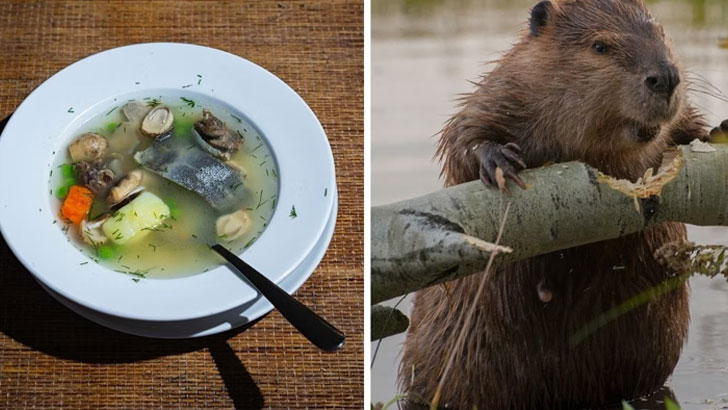
Beavers were widely hunted in North America during the 17th and 18th centuries for their pelts. Trappers would also eat the tails, which were described as having a gamey flavor, but were mostly just fat. This dish became popular throughout colonial America, almost as much as the beaver pelts themselves. Nowadays, beavers are protected species.
Almond Milk
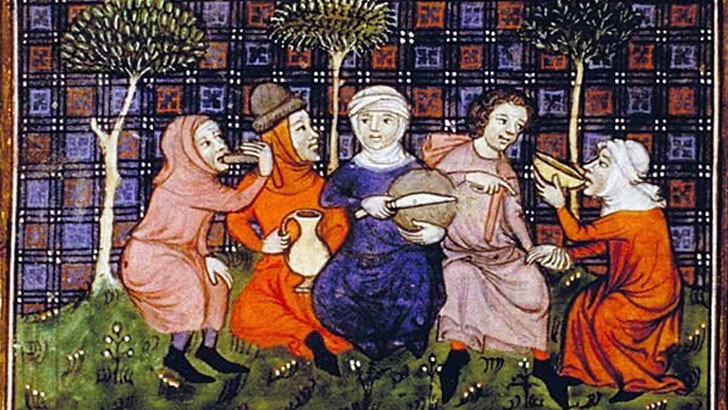
Contrary to popular belief, almond milk was widely consumed in medieval times. Every existing medieval recipe book includes a recipe that calls for almond milk. This was due to the fact that animal milk would spoil quickly, whereas almond milk would last without going bad. As refrigeration did not exist, almond milk was a practical alternative.
Eel Pie
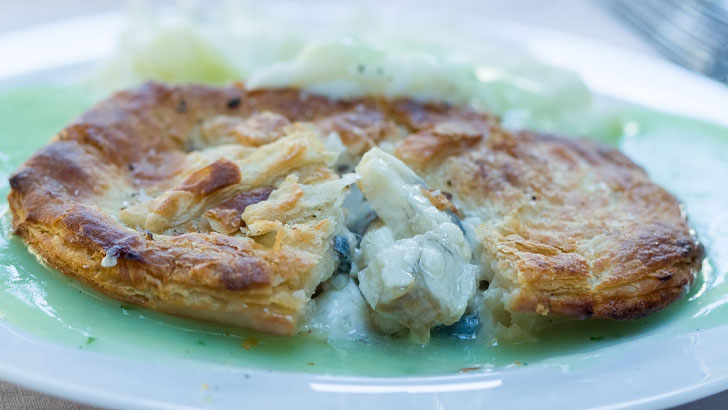
Eels were once considered a delicacy in colonial New England, where they were even caught using lobsters as bait. They were often prepared in pies. While eels are less popular today, they can still be found for sale in London and throughout England for those interested in trying a historic dish.
Suckling Pig
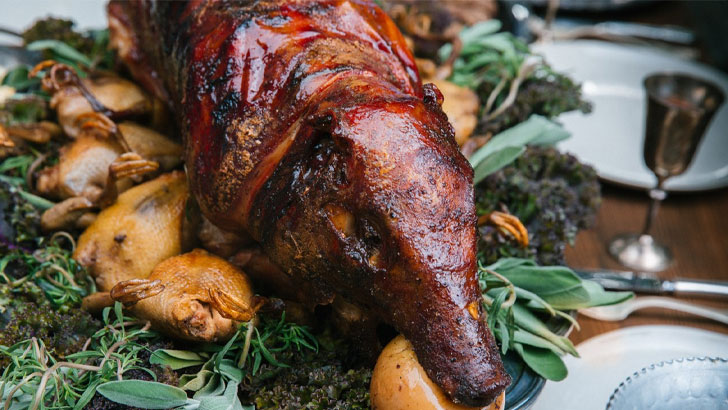
Suckling pig was a common dish at medieval feasts in Europe, as pigs were an important source of meat and fat. The youngest pigs were particularly prized. The dish called Cockentrice, which was made by sewing a suckling pig onto the bottom half of a young rooster, was also popular among medieval diners.
Ambergris
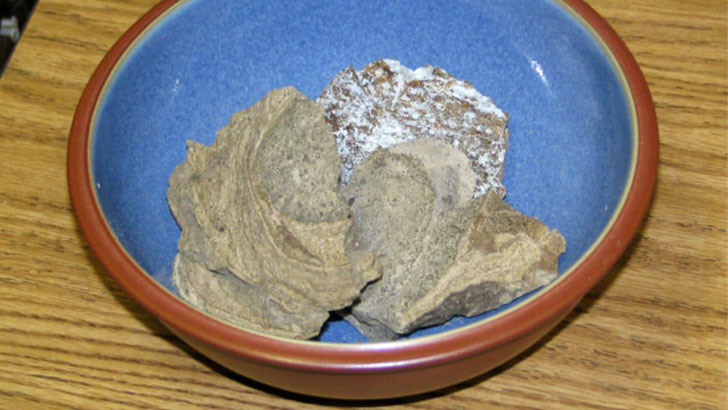
Ambergris, a substance found in the stomach of sperm whales and used as a fixative in perfumes, was also a popular ingredient in luxury dishes in the 1700s and 1800s. It was added to beverages, served alongside eggs, or used in hot chocolate. However, ambergris is difficult to obtain as it is only produced by a small percentage of sperm whales, and mostly floats on the ocean surface, and only rarely makes landfall, making it a valuable substance.
Cormorants

Medieval diners were not picky about the types of animal they consumed, and often ate exotic meats and offal. Studies show that wild bird bones are uncommon on medieval sites, but can be found in castles, indicating they were a luxury food. Some sea birds that were consumed during this time include gulls, herons, cormorants, and cranes.
Calf’s Foot Jelly
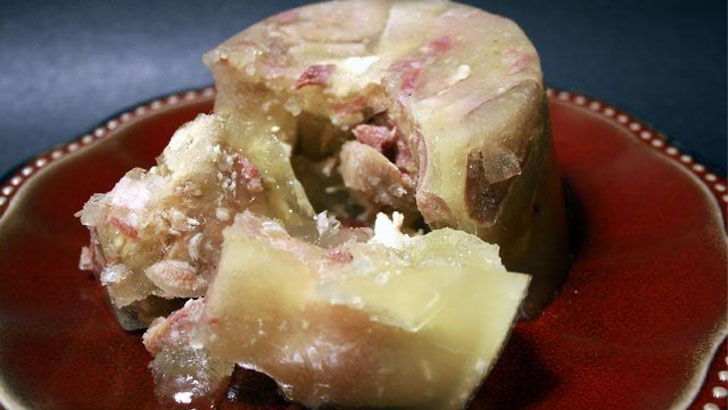
Gelatin, the main ingredient in Jell-O, is derived from animal collagen. Colonial cooks used this gelatin to make a dish called calf’s foot jelly, made from the hooves of young cows. Calf’s foot jelly is still made in some parts of the U.S. and other countries, and can be made into a sweet dessert by adding sugar.
Peacock & Swan
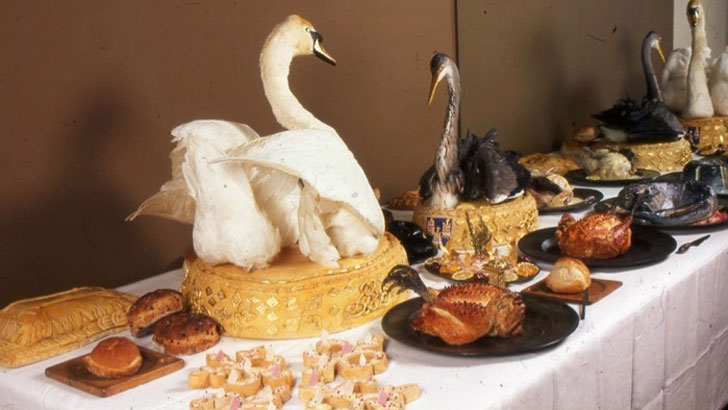
Medieval upper classes had a taste for exotic and luxurious meats, beyond heron, cranes, seagull and cormorant. They also ate rare birds such as peacock, swan, and even vulture. Swans were especially associated with the English aristocracy and could only be consumed with permission from the king.
Snake Meat Stew
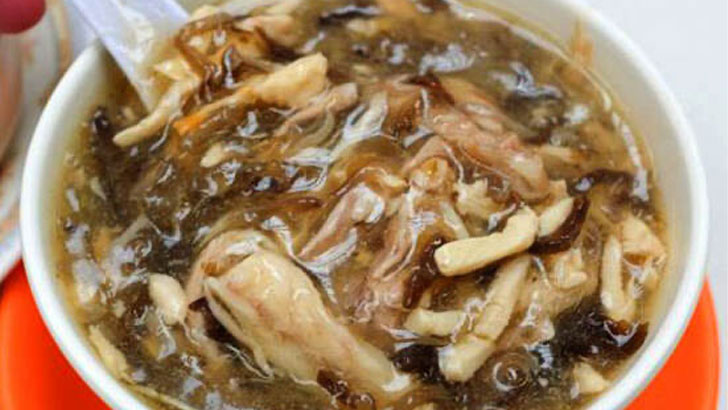
Snakes are not a common food in the United States, but they were consumed by colonists who had to make do with whatever food was available to them. Snake meat is relatively tasteless and has a texture similar to some types of fish, which made it palatable in soups. However, the idea of eating snake meat may be unappealing to some due to its association as a “icky” creature.
Seal & Porpoise
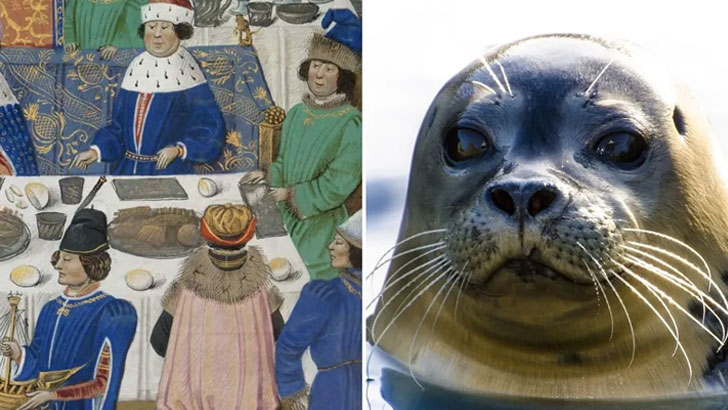
Medieval diners, particularly the upper class, had a diverse diet that included animals such as porpoises, seals, and even whales. During the late medieval period, when Catholics were required to fast and abstain from eating meat, birds, or cheese, they would consume “fish” which included marine mammals like whales, seals and porpoises as they were considered to be fish.
Turtle Soup

Turtle soup was a popular dish among the rich and upper-class in 18th century America, usually made from snapping turtles. However, with many turtle species now endangered, it is difficult to find turtle soup. The dish was consumed until the 1920s, when other meats became more widely available and preferred by diners. With the current conservation efforts, it is unlikely that turtle soup will make a comeback as a popular dish.
Lamprey
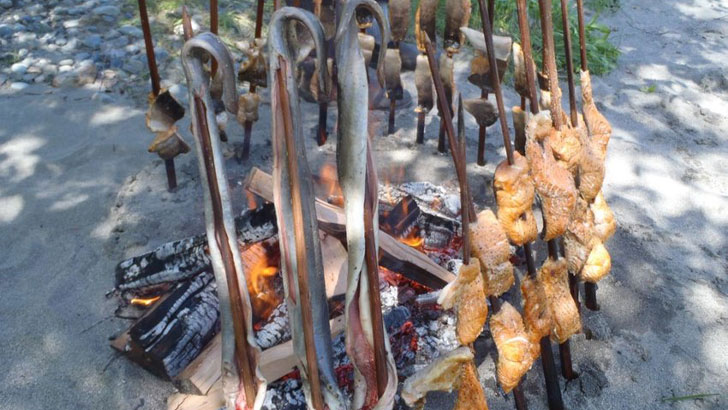
The Pacific lamprey, a jawless fish often mistaken for eels, was a popular dish among medieval British nobility, including King Henry I of England. These ancient creatures have a round disk-like mouth rimmed with tiny teeth, and despite their lack of jaws, they were considered a delicacy. However, overconsumption of lampreys was said to have contributed to King Henry’s death at the age of 68.
Bear Fat
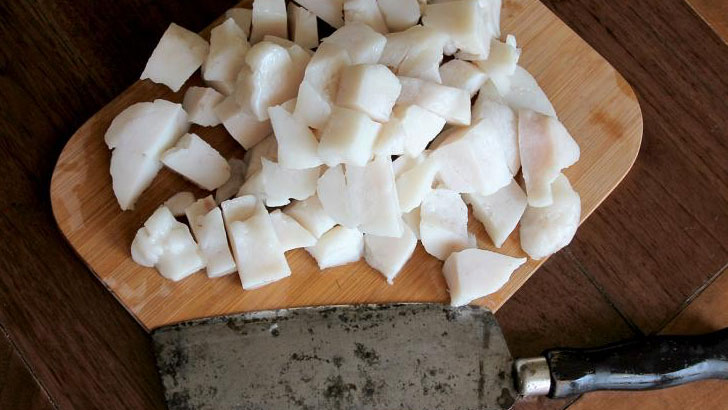
Colonists in wilder parts of the country would kill bears for food and use their fat to make a shortening-like substance, which was used for cooking and baking. Bear fat is said to be good for frying and has a longer shelf life than pork fat, making it a preferred alternative. Bear fat is still used by some people today for cooking and baking.
Deer
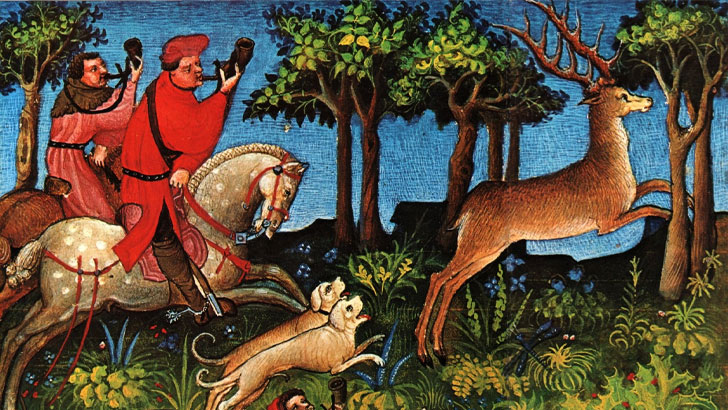
During medieval times, hunting was one way to obtain food, but access to land and hunting opportunities were not equal. The nobility, who owned most of the land, had ample time to hunt and their tables were filled with deer such as stags, bucks, and roes. These were often made into venison pies. Meanwhile, the workers had strict rules on what they could hunt and consume and would not have had the same access to hunting opportunities as the nobility.
Original Katchup
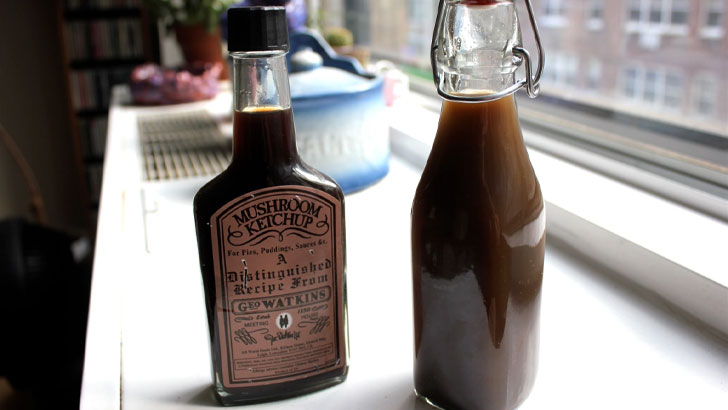
In colonial America, katchup was a sauce made from mushrooms, walnuts, anchovies, or oysters, not the tomato-based sauce we know today. Tomatoes were considered poisonous by many Americans during the 18th century and tomato-based ketchup did not appear in America until around the time of the Civil War.
Marzipan Sotelty
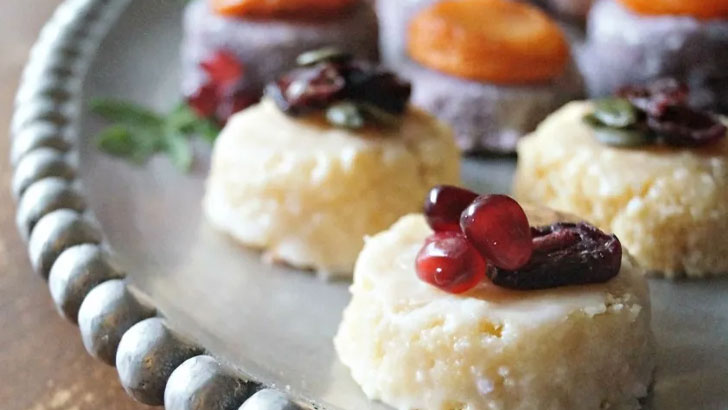
Medieval diners had a variety of desserts to choose from, including puddings, pies, and tarts. They also enjoyed sotelty, an ornate, edible dish made from marzipan and typically shaped to match a specific theme. These were early versions of personalized cupcakes or elaborate cakes. A recipe from Robert May’s 1660 cookbook “The Accomplisht Cook” includes a recipe for a sotelty shaped like a chessboard, made with almond paste, rose water, butter, sugar, eggs, and flour.
Pease Porridge
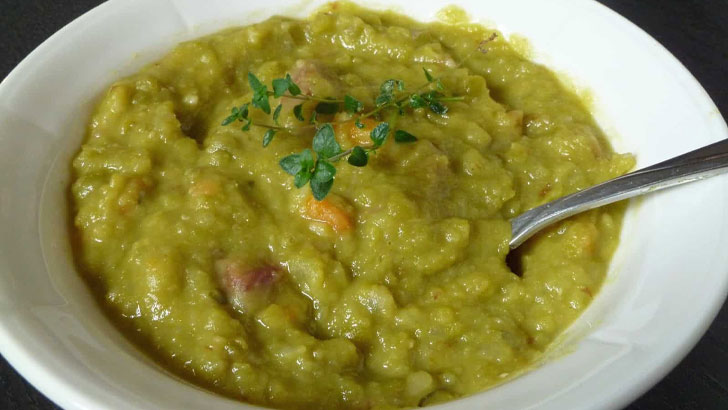
Pease porridge, also known as pease pudding, was a popular dish in colonial times due to its abundant ingredients. It was made by boiling legumes and adding a boiled ham or bacon joint for flavor. Today, split pea soup, which is similar to its 18th-century counterpart, remains a popular dish, especially on cold winter days.
Roast Squirrel Meat
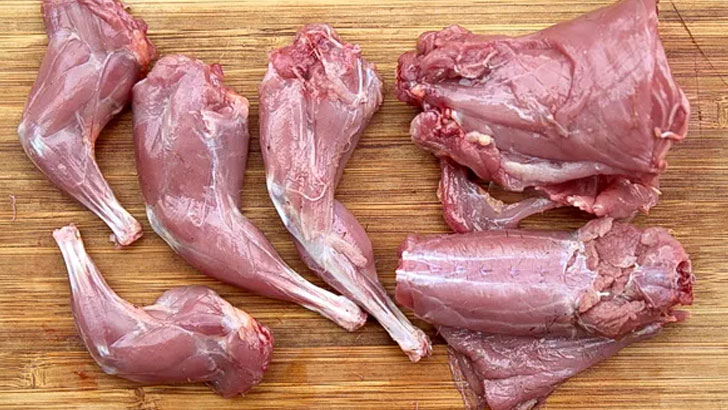
Rodents, including squirrels, were commonly found in America and were often trapped and eaten by colonists, particularly in unsettled areas. Squirrel meat was prepared in various ways such as in pies, stews, or fried. Squirrel hunting was a popular pastime, particularly in Connecticut. Catching these fast animals can be challenging, but colonists were able to do so.
Verjuice & Vinegar
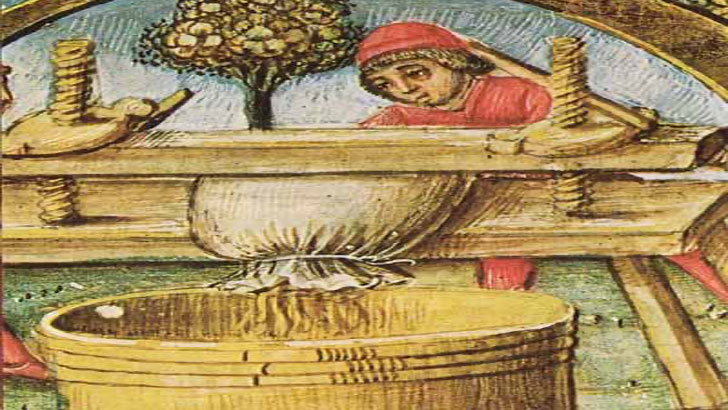
Medieval cuisine was known for its sweet and sour flavor profile, achieved through the use of ingredients such as honey and vinegar. The upper classes commonly used vinegar and verjuice, a highly acidic juice made from sour fruits like grapes or crab-apples. These acidic ingredients were often paired with spices like ginger, saffron, and black pepper, resulting in a combination of sweet, sour, and spiced flavors in dishes.
Tripe
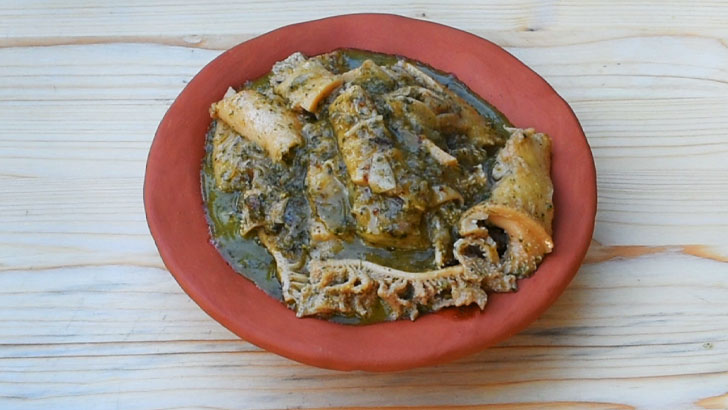
Tripe, which is the soft lining of animal stomachs such as cows or deer, was a popular dish in colonial times. It may have gained a reputation as being unappealing, but it was widely consumed in the past.
Aperitif
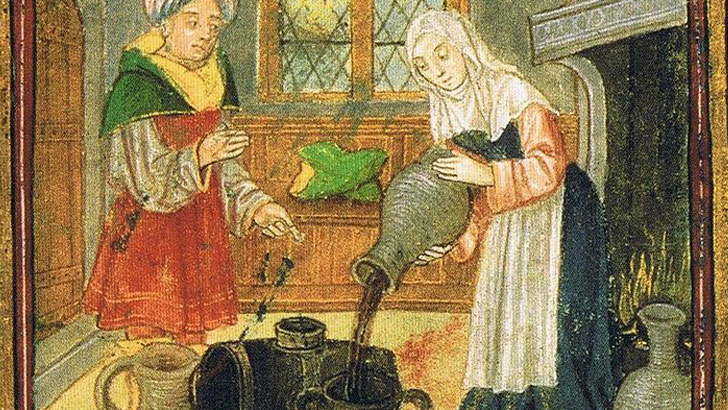
During the Middle Ages, it was believed that the human body was composed of a balance of four humors: blood, yellow bile, black bile, and phlegm. These humors were thought to be associated with the elements of earth, air, fire, and water and to have properties of being hot, cold, wet, or dry. The balance of humors in a person’s body was believed to influence their personality and health. As a result, meals would often begin with an aperitif that was considered hot and dry, such as a drink made from honey and spices.
Pokeweed
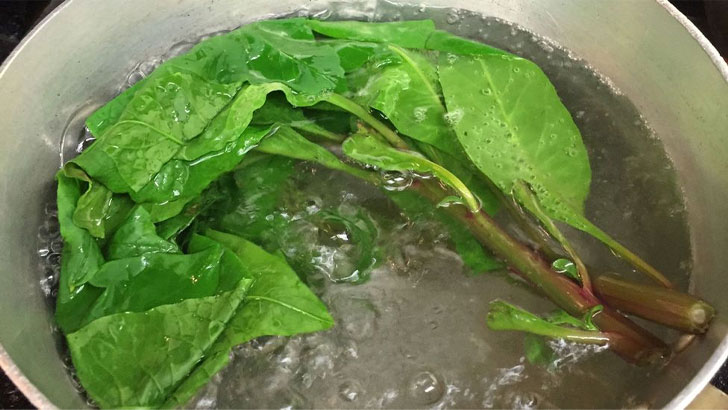
Pokeweed, also known as Phytolacca americana, is a poisonous herbaceous perennial plant that was used medicinally by both Native Americans and colonists. The roots, leaves, and berries of the plant were used to treat a variety of ailments, such as headaches and coughs. However, the plant is poisonous and consuming it required boiling the shoots and leaves several times before consumption. It’s interesting to know that pokeweed was used for medicinal purposes despite its toxicity.
Roasted Opossum
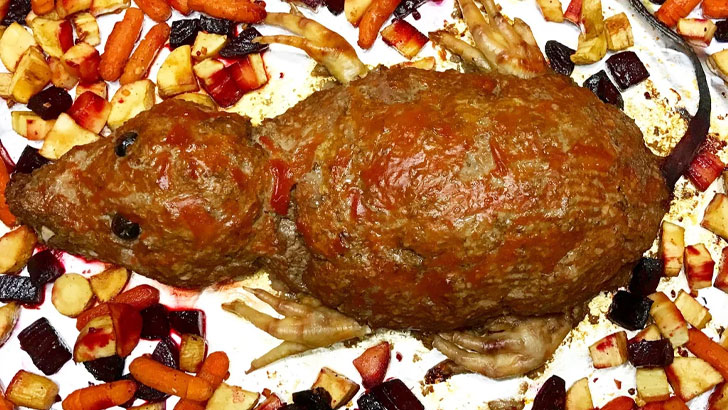
Opossums, also known as possums, are America’s only marsupial, meaning they are related to animals such as kangaroos. Despite this, they were commonly hunted as game animals by colonists and roasted for food throughout the colonies. Despite their marsupial nature, opossums were still a popular game animal for the colonists.
Sops
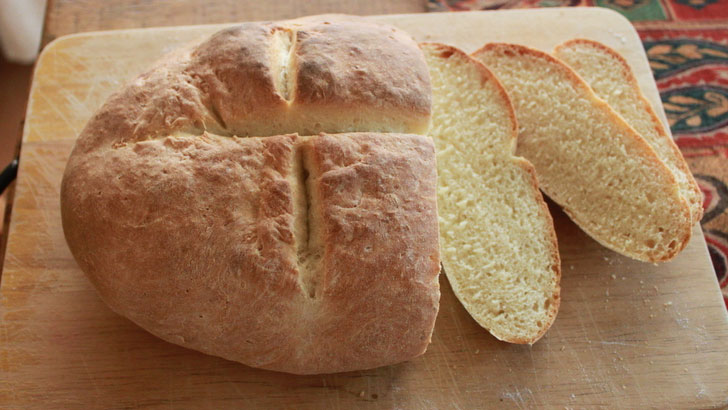
Medieval cuisine can often seem unappetizing to modern tastes, but sops were a popular food item. Sops were pieces of bread that were served with soup, broth, or sauce, and were used to soak up juices. They could be served as part of a banquet or as a snack. In contrast to today, where people tear off pieces of bread from a roll, in the Middle Ages, the bread was pre-cut into sops before being served.
Raccoon
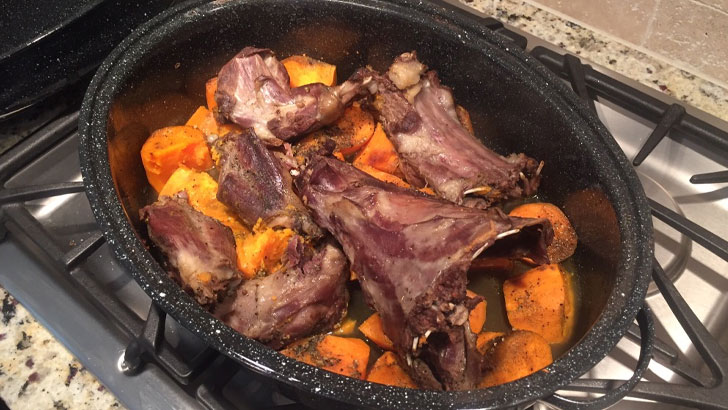
Colonial Americans were known to not shy away from any food sources, including raccoons, which were hunted and used for meat. Similarly, opossums and squirrels were also hunted and consumed, mainly by the lower classes. While raccoons are not as commonly consumed today, it is still eaten in some parts of the United States. The meat has been described as having a greasy texture and being similar to dark meat chicken. It can be prepared in various ways, such as roasting, boiling, added to stews, or simply eaten with vegetables and a side dish.
Fast Foods
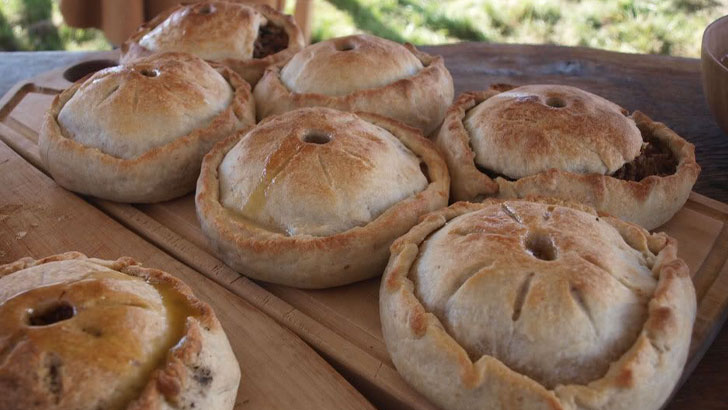
Medieval knights may not have had access to pizza, but they did have their own version of fast food. People in this time period could grab a quick bite with options like meat pies, pancakes, wafers, or hotcakes. These foods were designed for immediate consumption, similar to fast food restaurants today. However, much like modern takeaways, medieval fast food outlets had a negative reputation as being “dirty and dishonest.”
Pepper Cake
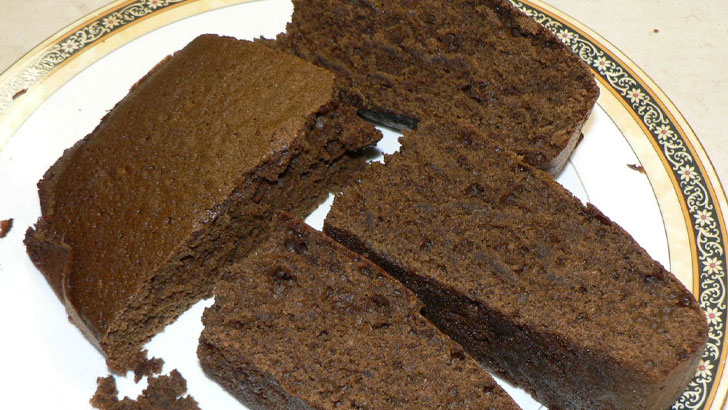
Pepper, an exotic spice, first arrived in Europe in the 18th century and was soon adopted by the American colonies. While pepper is not commonly used as a spice in desserts today, colonists used to bake it into cakes. According to Martha Washington’s cookbook, “Booke of Cookery,” pepper cakes were not only delicious, but also had a long shelf life if stored at the appropriate temperature, which was a significant advantage during a time without preservatives.
Lots of Grain

Contrary to contemporary diets, medieval diets consisted of a large amount of grains such as barley, wheat, rye, and oats as they did not have potatoes as a source of carbohydrates. It is said that most people in medieval Europe consumed between two to three pounds of grains per day. These grains were versatile, they could be boiled to make porridge, used to make bread, and sometimes paired with meats and fish.
Sassafras Leaves
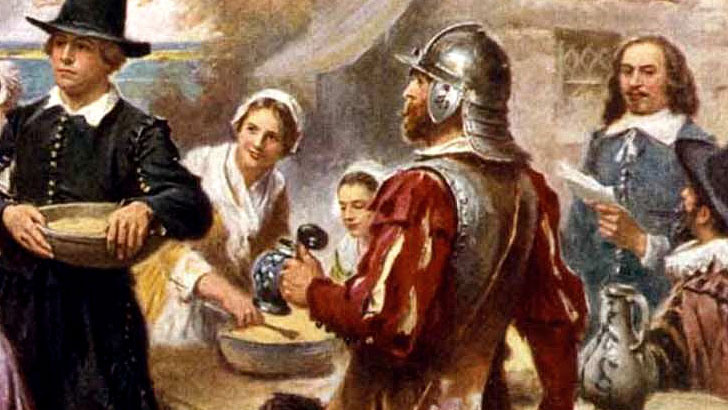
Sassafras tea is a beverage that is known to some people today, but in the 18th century it was a common food item. It was often added to stews or Creole dishes like gumbo, and was also a regular part of the Native American diet. Sassafras is a leafy green vegetable. However, it was also used as a remedy for syphilis in 18th century England, which led to the American colonies becoming a significant exporter of the leafy green.
Cooked Vegetables
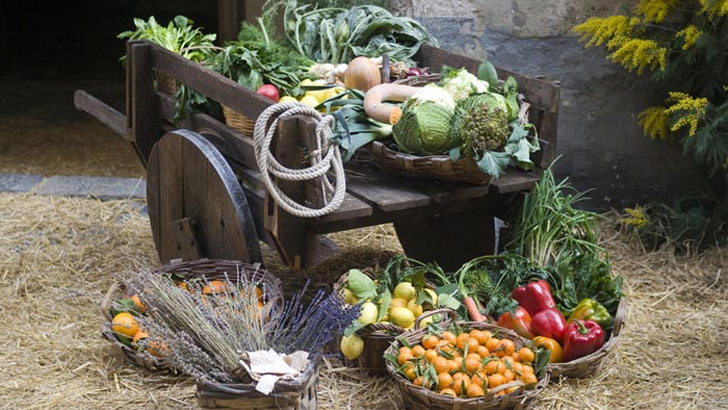
Today, raw fruits and vegetables are considered a healthy food choice due to their high levels of vitamins, minerals, and antioxidants. Eating them in their natural state ensures that the nutrients are not lost during the cooking process. However, during medieval times, people believed that consuming raw fruits and vegetables caused disease. The “Book of Carving,” written in 1500, advised people to “beware of green salads and raw fruits, for they will make your master sick.”
Jellied Moose Nose
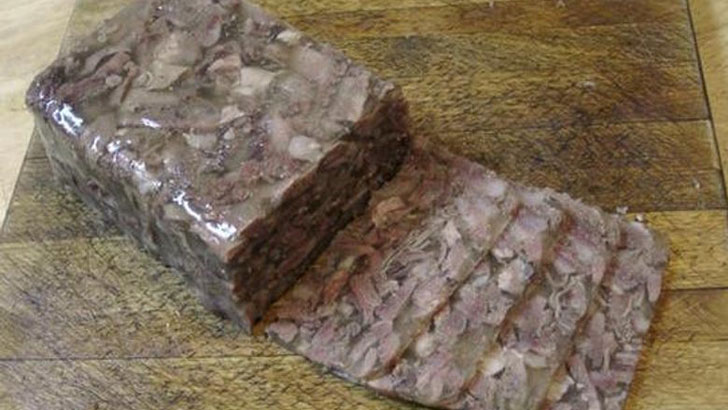
Colonists had a fondness for jellies made from various animal parts, and with the abundance of moose in the area, it was not surprising that they developed the dish called jellied moose nose. This dish was made by boiling the upper jaw of a moose and then letting the meat sit overnight in moose broth. While the recipe for this dish can still be found online, it may be difficult to find moose meat. However, it is possible to make this dish using other animal parts such as pig snout or cow nose.
Dried or Salted Fish
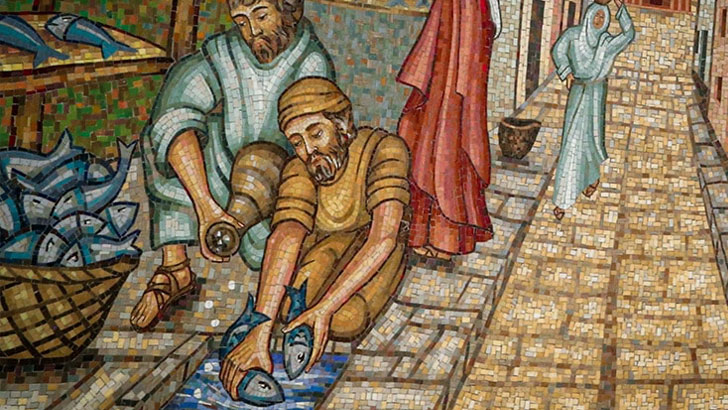
In addition to consuming fish that were classified as mammals during the Middle Ages, people also ate actual fish such as cod, salmon, sardines, and bream. To preserve the fish for consumption, various preservation methods were used as there were no refrigeration methods during that time. The fish were dried, smoked, or salted to extend its shelf-life, particularly during the colder months.
Humble Pie
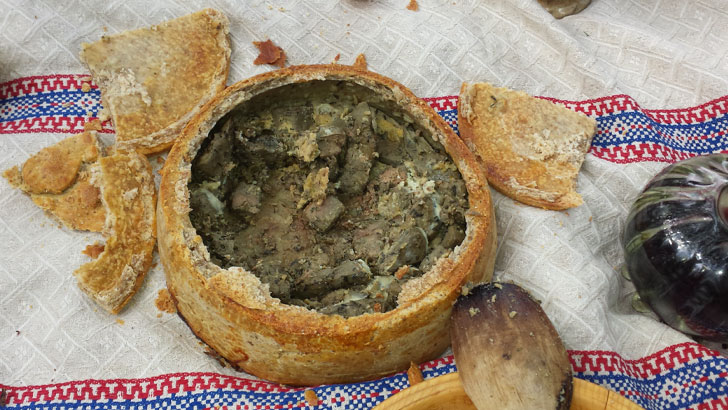
Humble pie, also known as umble pie, was a dish made from the leftovers of an animal, typically the organs, mixed with apples, sugar, and spices. It was a common meal for the lower classes. This dish has a long history, dating back to the Middle Ages. The upper classes would consume the meat, while the lower class made use of the leftovers by preparing it as a pie.
Oysters, Mussels, etc.
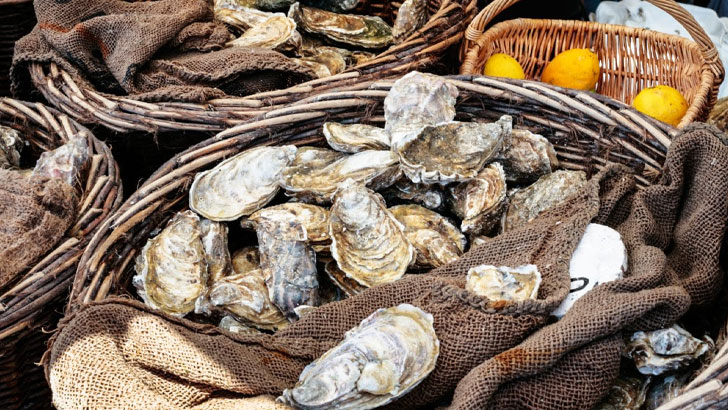
Oysters were considered a luxury item for the wealthy, similar to how they are viewed today. The oysters consumed during medieval times in Europe were the smaller European oyster, as opposed to the larger Pacific or Eastern oyster. This could explain why King Henry IV of England was said to have consumed 400 oysters in one sitting. Along with oysters, medieval people also enjoyed seafood such as crayfish, crab, cockles and mussels. Although seafood was not as prestigious as meat, it was still enjoyed, especially on fasting days.
Hasty Pudding
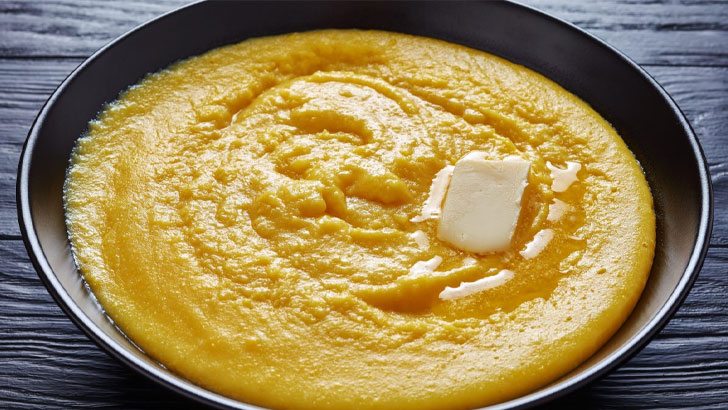
Hasty pudding was a type of porridge made from corn or flour, mixed with boiling water or milk and eaten while still warm. It was called hasty pudding because of its fast preparation time, and it was a popular breakfast food both in America and England. The American version of hasty pudding was usually made with ground Indian corn, not flour. As corn was not widely cultivated in England, it was not as popular there.
Imported Spices
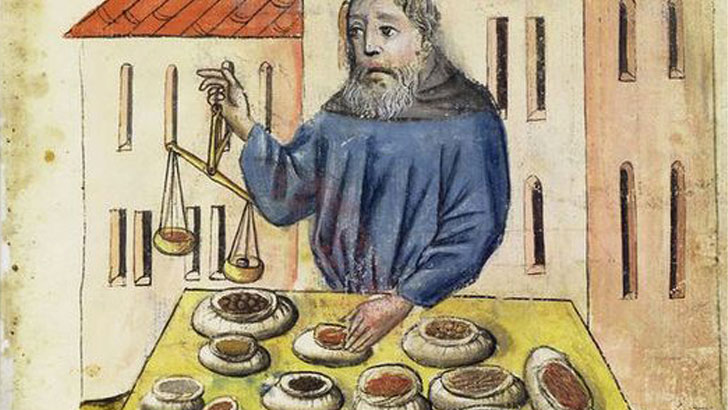
Spices were highly sought after luxuries in Western Europe during the Middle Ages, as they had to be imported from Asia and Africa. The most commonly used spices during this period were black pepper, cinnamon, cloves, ginger, nutmeg, and cumin. Black pepper was particularly valuable and it was even hoarded and traded like gold. It is estimated that 1,000 tons of black pepper were imported into Western Europe during the late Middle Ages, demonstrating the high demand for spices.
Partridge
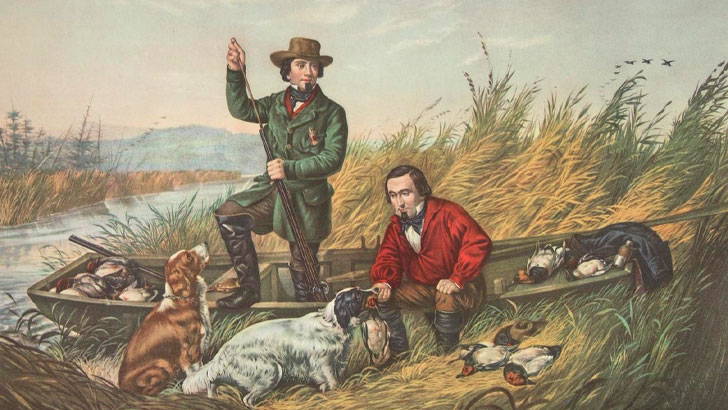
Partridges are medium-sized birds that are native to Europe, Asia, and parts of Africa. They were a popular food choice among colonists as they are non-migratory birds, and were easily accessible for hunting. Partridges were considered a nutritious meal during colonial times.
Beans
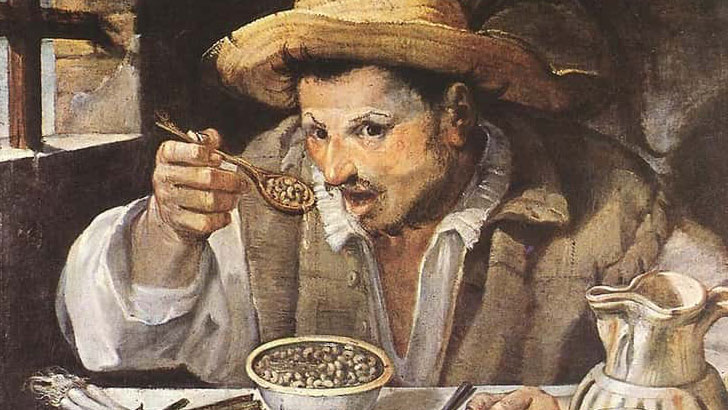
Italian philosopher Umberto Eco argued that the cultivation of legumes in the 10th century played a crucial role in the prosperity and success of Western civilization during the Middle Ages. He suggested that beans provided a source of protein for working people, making them stronger, healthier, and able to have more children, which led to a population growth in Europe. Prior to the widespread cultivation of beans, the population struggled to get the protein they needed, but with the availability of beans, the population of Europe doubled within a few hundred years.
Sturgeon

While fish is still a commonly consumed food today, sturgeon is not as well-known. When the first English settlers established the colony of Jamestown in the New World, they caught a large sturgeon from the James River. At that time, there was an abundance of this type of fish, and according to John Smith, “We have more sturgeon than humans and dogs can consume.”
Honey & Mead
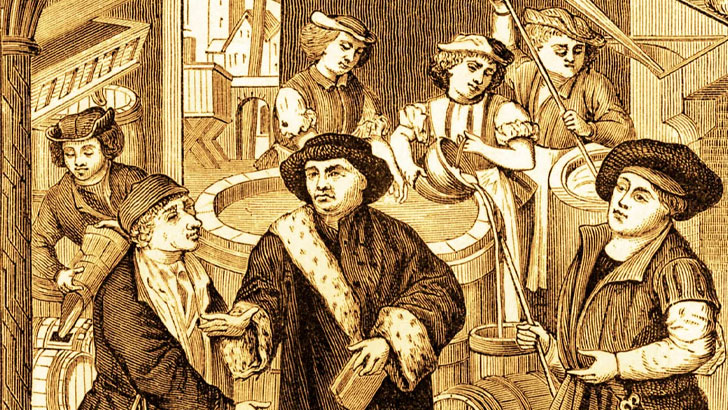
Honey is a remarkable food as it does not spoil or expire because microorganisms cannot grow in it. This means that it can last for thousands of years. It also has antibacterial properties and can be used as a sweetener. During the Middle Ages, people kept bees in hives called apiaries and used the honey for cooking. They also used it to make mead, a popular drink at the time.
Perry Drink
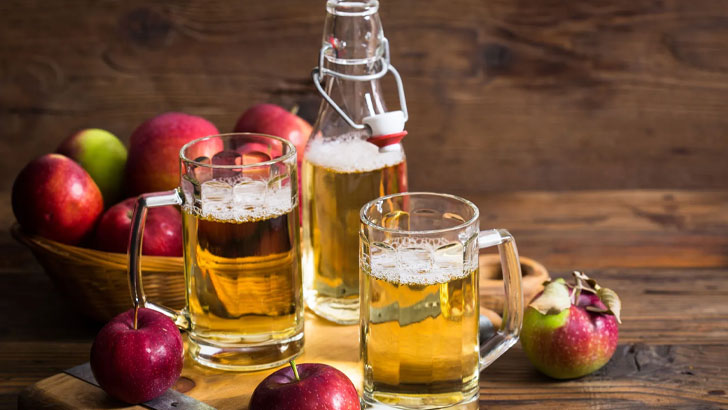
Pears were a common fruit in colonial America and from this fruit, a fermented beverage known as Perry was made. Perry was brought to the American colonies from England and France, where it was enjoyed occasionally. Nowadays, apple-based beverages are more popular than those made from pears in the U.S. It is not clear why this is the case, but Perry sounds delicious.
Waffles & Baked Goods

When sugar was first introduced to Europe, it was considered a luxury item and treated like a drug, rather than just a sweetener. This made it even more desirable, and it was used in various desserts such as fritters, crepes, and sweet custards. French chefs created darioles, which are desserts baked in cone-shaped molds. A sweet dariole is made by lining the mold with puff pastry, and filling it with almond cream before baking. A savory version could include cheese, fish, bone marrow, or fruit in the pastry.
Weird Ice Cream
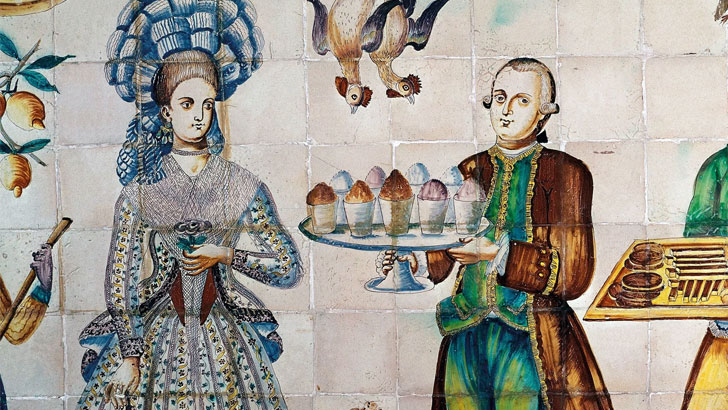
Ice cream was first introduced in colonial America in the mid-18th century, made possible by the development of ice houses where it could be produced and stored. It quickly became a popular dessert and many different flavors were available. Ice cream was not always sweet initially, it was also flavored with savory ingredients such as eels, asparagus, or chestnuts, in addition to the more traditional sweet or fruity flavors.
Types of Milk
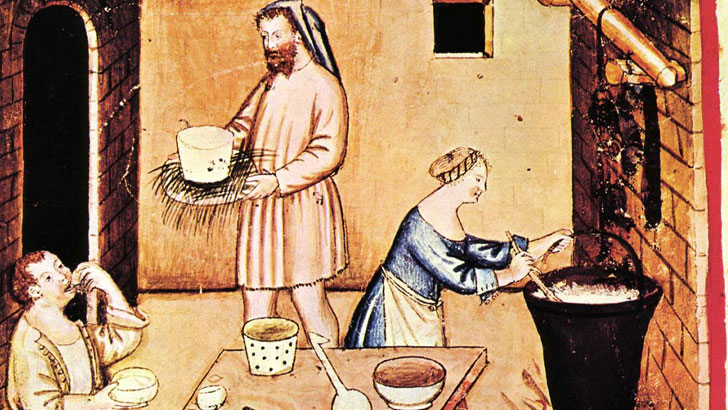
Although almond milk was the most popular form of milk during the medieval period, animal milk was still consumed. This is because it is a good source of protein, especially for those who could not afford meat. However, it was mainly consumed by the elderly and young. Poor people would occasionally drink buttermilk, whey, or watered-down milk. Fresh milk was used occasionally in upper-class kitchens for stews.
Lobster
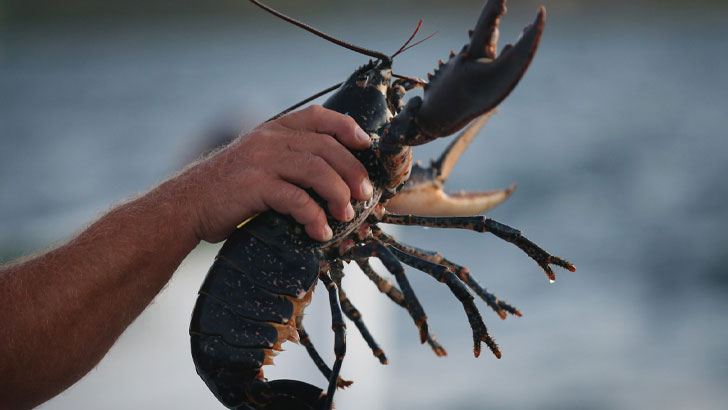
Lobster may be a common food today, but in colonial America, it was considered a food for the lower classes because it was so abundant. They were even used as bait for eels. However, the perception of lobsters has changed, and it is now considered a luxury food and one of the most expensive types of seafood. The use of eels as food is also not as common as it was before.
Clabber
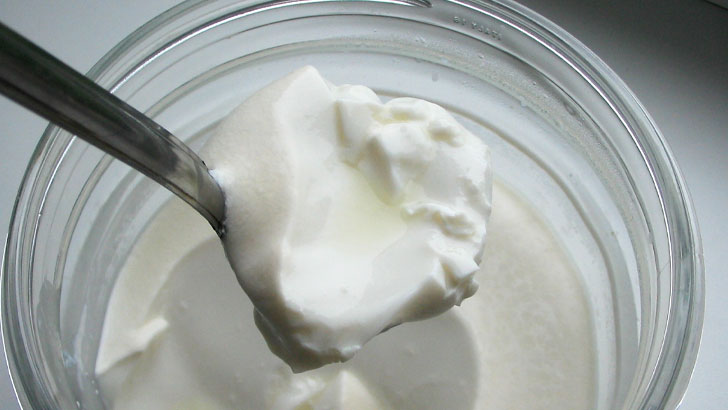
The name “clabber” might not sound appealing, but it is simply fermented milk, much like yogurt. Although the idea of sour milk may not sound appealing, it is used in many delicious foods. Clabber was particularly popular during colonial times. Before discarding sour milk, consider using it to make Clabber. Colonists used to add seasonings such as nutmeg, cinnamon, or pepper to enhance the taste.
Dragée
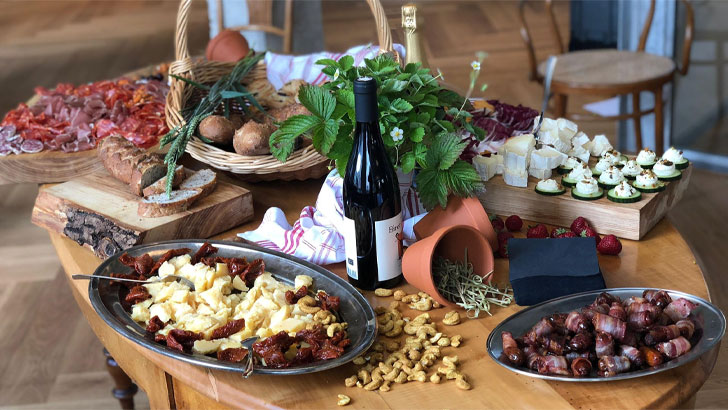
After the meal, medieval people would use a digestif to close the stomach. The most common digestif in the Middle Ages was a dragée, which was a dish that contained the appropriate balance of humors. Dragée could consist of aged cheese, lumps of spiced sugar, or a drink flavored with fragrant spices. This is similar to the cheese boards that are commonly served at the end of a meal today.
Scrapple
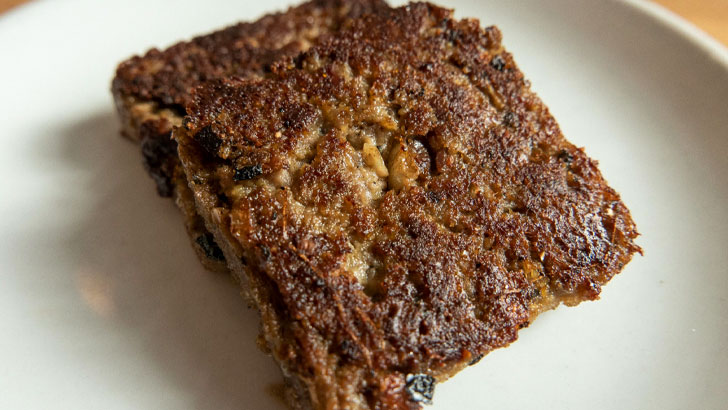
Colonists in the past were resourceful and did not want to waste any part of an animal, including pigs, sheep, and cows. To make use of the leftovers, they would make a dish called scrapple, which is a meatloaf made from ground up “extras” such as the snout, heart, brain, or eyes. Scrapple is still made today, but it is mostly made with pork trimmings rather than using every part of the pig.
Oils

In the Middle Ages, olive oil was considered a high-quality but expensive ingredient and was mainly used in Mediterranean cultures where it was produced. In other areas, more affordable alternatives such as oils made from hazelnuts, filberts, poppy seeds and walnuts were used for cooking. However, after the Black Death, butter and lard became more readily available due to the large number of deaths. As a result, they were used more frequently in the preparation of dishes.
Pigeons
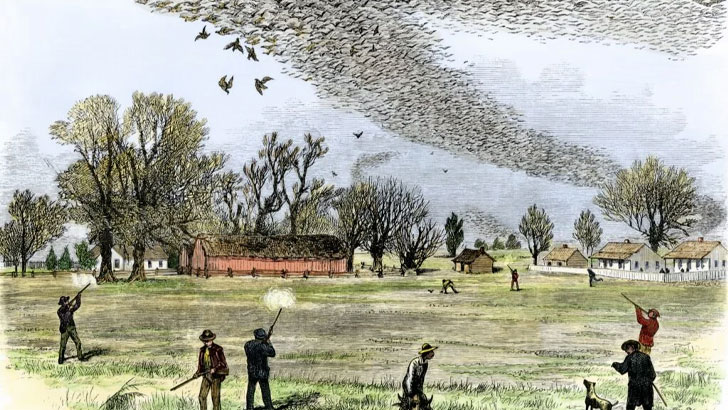
Pigeons were a popular food among colonists due to their abundance and meatiness. Unlike most birds consumed today, pigeons were not fully domesticated. Eating pigeon was considered a delicacy for the upper class due to the amount of work required to prepare the dish. Nowadays, most people don’t eat pigeons.
More Movies + TV Shows
-


Amazing Life Hacks That Actually Work
-


Most Epic Wedding Dresses Of All Time
-


Tacky Kitchen Decor Mistakes To Avoid
-


Car Cleaning Hacks To Save Time & Money
-


Creepy Abandoned Amusement Parks That Look Post-Apocalyptic
-
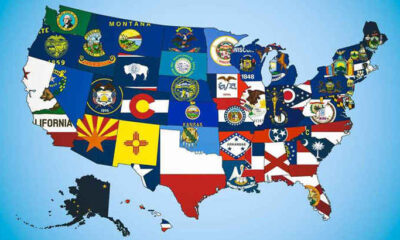

Fascinating Laws Around the United States
-
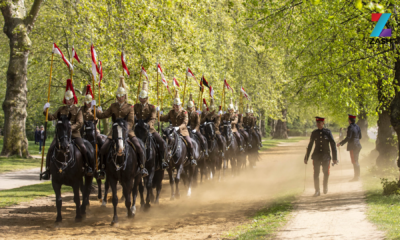

British soldiers on horseback hold dress rehearsal for Queen’s 70th…
-
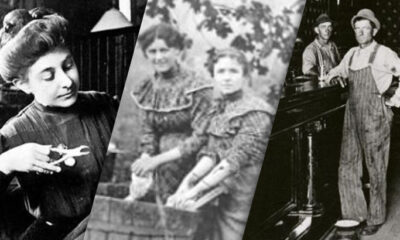

Amazing Wild West Hygiene Practices
-


30 Greatest Wide Receivers Ever – Ranked
-


Dog Breeds Not Meant For Your Home
-


Most Iconic Movie Cars Of All Time
-


Incredible Celebrity Yachts On The Sea

